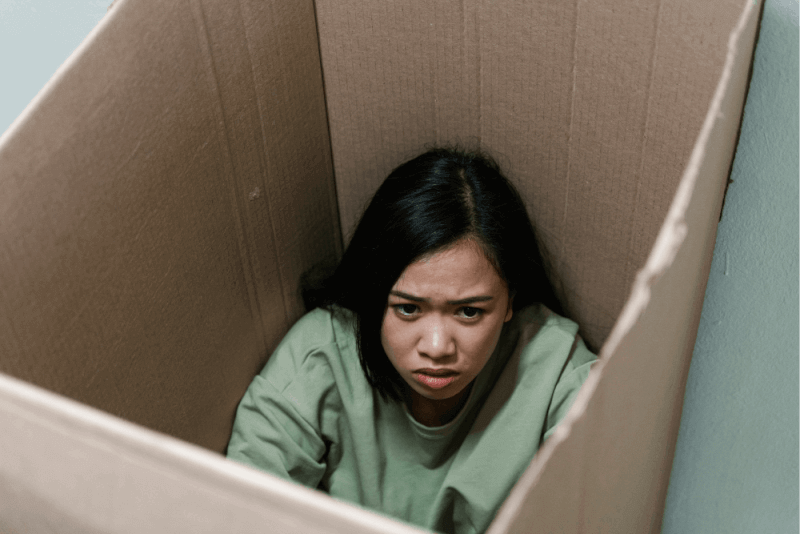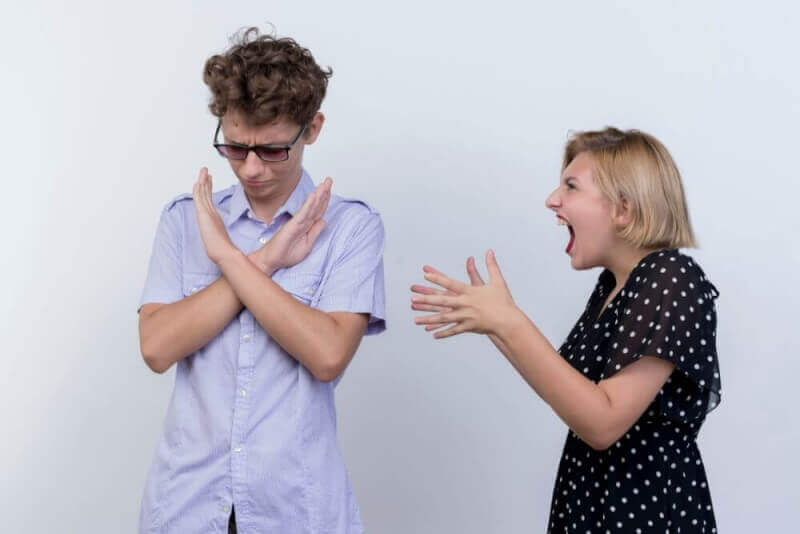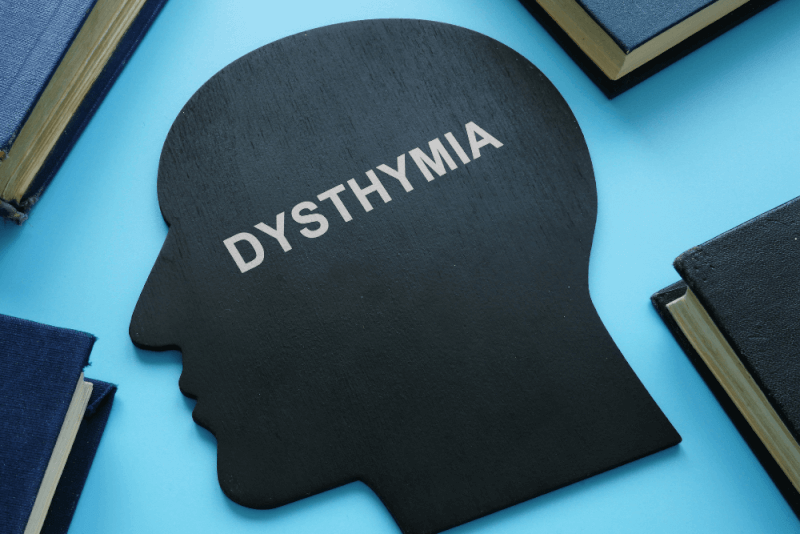What is claustrophobia?
Claustrophobia, one of the anxiety disorders, usually occurs during adolescence or childhood. People with claustrophobia, commonly referred to as fear of enclosed spaces, often have difficulty staying in places such as elevators, airplanes, locked rooms or caves.
The definition of claustrophobia is severe internal distress that can be seen in people who have to stay indoors. This distress also causes physiological symptoms. People with high levels of anxiety are also more likely to experience claustrophobia. Claustrophobia, one of the most common anxiety disorders, can also cause panic attacks in severe cases. The factors that trigger claustrophobia vary from person to person.
What Causes Claustrophobia?
As with other phobias, certain areas of the brain are overly activated in claustrophobia. The cause of claustrophobia, which differs between individuals, is not known for certain. But there are some theories.
Childhood Traumas
Many psychiatrists argue that childhood traumas are effective in the development of claustrophobia. Being locked in a locked room as a punishment in childhood, for example, manifests itself as claustrophobia in adulthood.
Genetics
A study on claustrophobia showed that the GPM6A gene is mutated in people with claustrophobia. For this reason, claustrophobia is also thought to have a genetic inheritance.
Near Field Perception
Everyone has a personal space. This is the space where people are closest to an object and feel most comfortable. In the brain, the neurons that distinguish between near and far objects are different. People with large personal space are more likely to suffer from claustrophobia.
Symptoms of Claustrophobia
The symptoms of claustrophobia are similar to those of other anxiety disorders. However, the most common and characteristic symptom of claustrophobia is the feeling or fear of losing control. Other symptoms of claustrophobia include
- Heart palpitations
- Tremors
- Difficulty breathing,
- Sweating
- Hot flashes
- Feeling of suffocation,
- Chest pain or a feeling of tightness,
- Butterflies in the stomach,
- Nausea
- Headache
- Dizziness
- Numbness in the body,
- Tinnitus
- Confusion,
Some of these symptoms are symptoms of a panic attack. Because people with claustrophobia also often suffer from panic attacks. If claustrophobia is severe, the symptoms are as follows.
- Fear of dying,
- Severe feelings of fear,
- Fear of fainting
- Fear of losing control,
Triggers of Claustrophobia
Many emotions and situations can trigger claustrophobia. Although these factors vary from person to person, the common triggers are as follows.
- Planes
- Elevators
- Environments with sealed windows,
- Tunnels
- Changing rooms in shops,
- Tube trains
- Car washes
- Revolving doors,
- Vehicles with central locking,
- Public toilets,
Most Common Fears
Basically, people with claustrophobia are not afraid of confined spaces. The reason why these are triggers is the underlying fears. In this context, claustrophobic fear:
Locked in and unable to escape
For many people, tight spaces make them feel trapped. Underlying this fear are thoughts of disaster.
Limited Movements
People may experience fear of being locked in. They fear that in isolation they will not be able to get help from anyone. These concerns are characterized by restrictions on freedom of movement.
Fear of Drowning
Due to both the restriction of movement and the small space, people believe that the air will be insufficient and they will suffocate. They therefore experience feelings of suffocation.
Anticipation Anxiety
When a person with claustrophobia knows in advance that they will enter a confined space, they start to experience symptoms such as trembling, palpitations and sweating.
All these fears experienced by people with claustrophobia are extremely difficult to control and can trigger panic attacks. For this reason, they tend to avoid closed environments. In some cases, they cannot escape the confined space. In these situations they try to protect themselves in some way. For example, they stand by the window or near doors.
How is claustrophobia diagnosed?
There is no physical or laboratory test to diagnose claustrophobia. For this, experts use standardized assessments such as the claustrophobia scale (CLQ). In addition, taking a detailed history of the patient is a key point in the diagnosis of the disease. Experts can detect claustrophobia by asking their patients a series of questions. In addition, it should be determined that the patients meet the DSM-5 standards.
Claustrophobia Treatment
Like other anxiety disorders, claustrophobia is a treatable disorder. More than one method is used in its treatment. These methods are usually used together to ensure that patients are treated as soon as possible.
Cognitive Behavioral Therapy (CBT)
Cognitive behavioral therapy is a treatment method that is applied in the treatment of all specific phobias and successful results are obtained. A randomized trial showed that 5 sessions of cognitive behavioral therapy were sufficient to treat the clinical symptoms of claustrophobia.
Medication Therapy
Medication is also used to support cognitive behavioral therapy. The medications and dose adjustments are determined according to the course of the sessions.
Exposure Therapy
Another method used in the treatment of claustrophobia is exposure therapy. In this technique, patients are gradually acclimatized to closed spaces. The aim of the treatment is to systematically desensitize people to the phobia.
Virtual Reality
With virtual reality, another form of exposure therapy, people are desensitized to their phobias by using computer simulation. Virtual reality, which is considered safer than the exposure technique, is still in the research phase.













